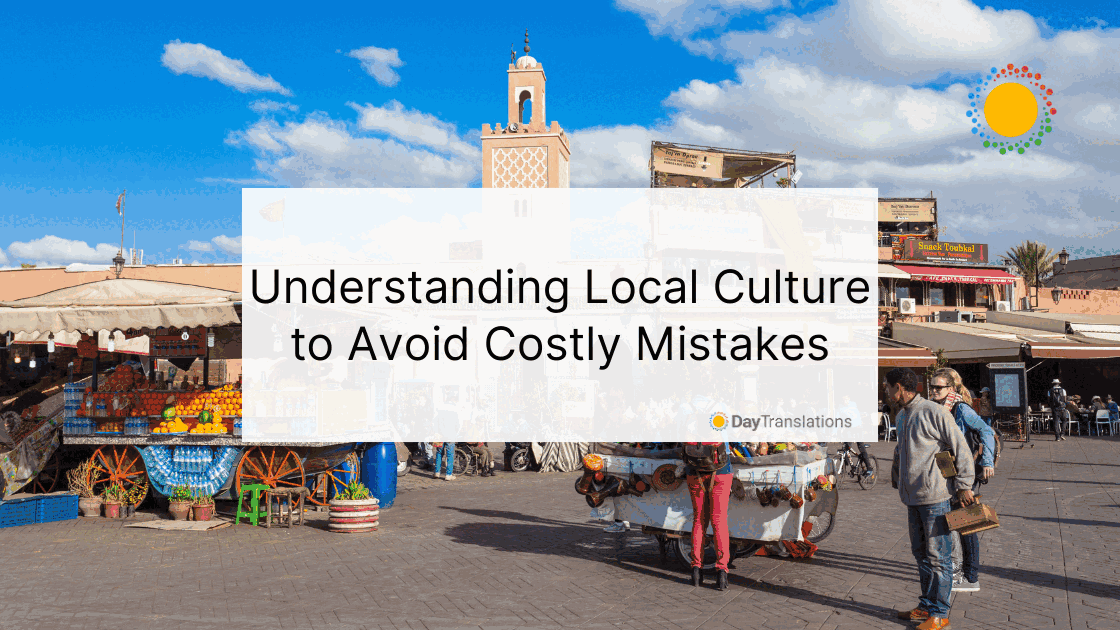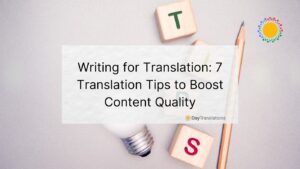Websites are accessible to international audiences, and digital content translation is vital in hitting the right target audience. It is essential to employ search engine optimization (SEO) for various websites, blog sites and websites for all types of businesses if you want to disseminate your content online. Why is SEO important? Without SEO, it is going to be difficult for the web visitor to find your content, which is one of the key purposes of SEO.
However, the environment becomes complicated when it comes to translating your content for the international audience. You might have your digital content optimized in one language, but translating your content into other languages can affect the search engine optimization of your website.
SEO is concerned about Internet searching, so doing a translation is not that simple. Although the translation of the phrase or keyword may be technically correct, the translated keyword may not be the right search term in the foreign language.
Challenges in SEO-focused digital content translation
What challenges translators when working on SEO-focused digital content translation is correctly translating the content’s meaning while keeping the effectiveness of the search engine optimization. It means understanding the nuances of the new language and realizing how it will affect the searching method of the new audience.
In digital content translation, it is vital to know how to make your content for the international audience as effective as the version in its native language.
Understanding the technical aspects of global searching
The translation of your digital content will be valid if the translator understands the mechanics involved with global searches. When you have your website in your native language, the analysis of how local audience searches and finds digital content will determine your SEO strategies.
For the international audience, the SEO strategy goes farther than the actual translation of the content. It means looking at the different search engines used in different countries, as the search engine you are familiar with in your country might not be dominant in other countries. When you are targeting foreign audiences, it is better to adapt the SEO strategies to the local requirements as well. For the translation to be useful, it should be localized, which means the keywords should be location-based. Doing so will ensure that other search engines and their users can identify relevant content according to their current needs.
This method of creating location-based keywords is called geo-targeting, which helps international searches to be more effective. Geo-targeting is implemented for global websites. To illustrate, if you are in the United States and you search for an air conditioning technician, you will see service providers located across the nation. But if you only want to find an air conditioning technician within your locality, you can do a local search by specifying your location. Geo-targeting involves several more processes than this, though.
Knowing all the requirements
It is vital for website owners to have their sites rank high in the search engine index, which means that the SEO manager must fully understand the search engine’s algorithm. Therefore, when translating digital website content, the translator should include all the terms that the search engine indexer or crawler sees, not only the content that is visible on the site.
The things that matter include the descriptions, meta titles, meta tags, sitemaps, URLs, and other texts that are unseen. Meta tags are like labels connected to the website content that allow the search engines to use the specific keywords, tags and other texts to ascertain the material and its relevance to particular types of searches.
An image has metadata, the state where and when it was created, and what is in the image. In some cases, the equipment used in creating the image is also available. These types of information are all useful so the search engine can correctly assess where the image will fit.
This is how the search engine works; therefore the process is repeated for all parts of the content, the individual elements and every content on the website. The components and the methods are vital to ensure that the searcher gets good search results.
The process is going to be the same for the translated version of the website. To achieve good search results, the translation of the visible content and the unseen texts should be very accurate. Failure to translate the hidden texts, for example, from English to another language, will affect the adequate performance of the search result.
Many websites have content management systems (CMS). However, not all of them allow websites owners to edit the hidden texts. If this is the case, it is essential for website owners to collaborate with a translation and localization services provider for the complete and accurate translation of these unseen texts.
Do not forget the URLs
Effectively translating websites for global users include translating or localizing website content, including tags, descriptions and metadata. However, the translation does not stop there. Many website owners and developers forget about this. We are referring to the website URL, which is a vital part of SEO. It has to be translated as well so that the search engine such as Google will be able to recognize if the website pages have versions in different languages. The language switcher will function better if the URL is not only search-friendly but also multilingual.
Improving online visibility
SEO and translation improve a site’s online visibility in new target markets. Business owners strive to have the most extensive exposure of their website to the new markets they want to explore. They have to exert more effort because they have to compete with existing native-speaking businesses in the local area.
It has already been established that international consumers prefer to access websites and purchase products online through websites that are in their own language. Likewise, pricing ranks second to language when making purchasing decisions.
Integrating SEO into the digital content translation
Website localization involves translation. There is no assurance that you can be a global success online through translation alone, but it can be a great help. Language is complex, and each one has a particular lexicon. Native speakers can quickly detect if the translation is done by a non-native speaking translator.
It is critical for website owners to work only with professional translation services provider who are experts in SEO as well. This is very vital for your foray into the global market. You have to optimize your digital content into the target language.
Optimizing your digital content translation includes research on effective keywords in the target languages, taking particular note of keywords that are country-specific. Choose those keywords that earn high search volumes in the target language.
It is vital that before you start digital content translation, you should draw up a careful plan that covers the entire process. Translating your digital content for the global market is a big investment; therefore it is essential to plan for the translation or localization and optimization of the website at the same time. This saves not only time but also money.
Cultural knowledge
Making your website available in different languages means ensuring that your site also adopts the local culture. This is the realm of something more than just translation. This is called localization, which sees to it that the entire content of the website is translated into the new language. Localization ensures the proper implementation of the local conventions such as currency, time, address and measurement. The process considers the beliefs, customs and preferences of the target consumers.
Digital content translation for global audiences
Taking everything into consideration and integrating SEO into the digital content translation process should be done simultaneously. To ensure proper implementation, the site owner should have a solid localization strategy that outlines everything that should be done, the purpose of the localization, the target audiences and the deadlines. It is not often said that the integration of the SEO is part of the localization process. It should be pointed out that without SEO integration and the localization of the texts that affect search engine optimization, the website will not be successful in the local search engine indexing and local searches.
Digital content translation for global audiences takes more than basic translation. The process is more complex as it includes the translation of specific hidden data that improves SEO performance in any language. It takes a professional translation company with expertise in translation, localization and SEO management to properly and accurately translate websites in preparation for global users. Collaborate with Day Translations, Inc. if you need digital content translation in different languages. Our expert linguists are all native speakers and located in-country, ensuring that you are immediately attended to anytime, anywhere. Get in touch with us through 1-800-969-6853 or send us an email at Contact us. We are open every day, all throughout the year.














Sorry, the comment form is closed at this time.